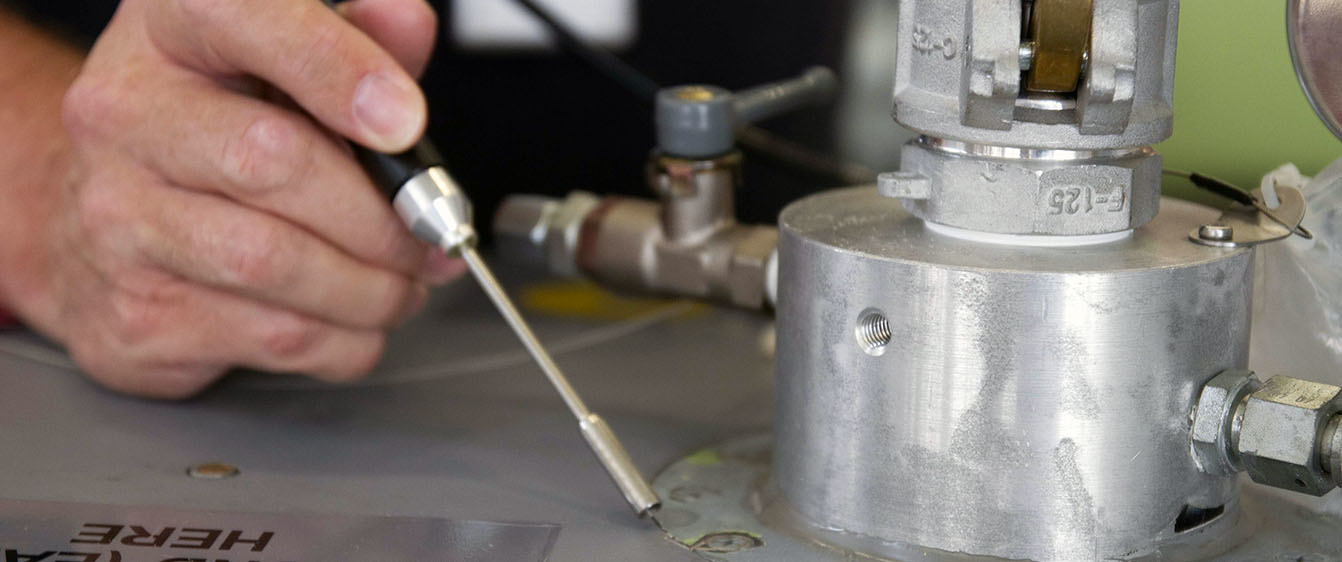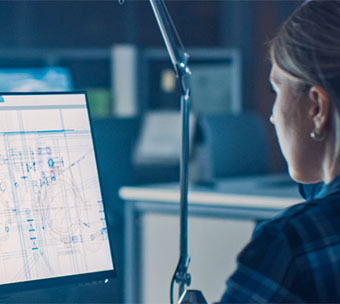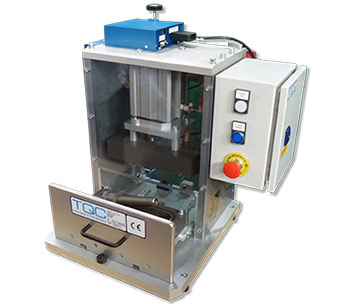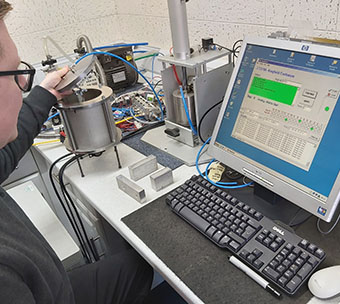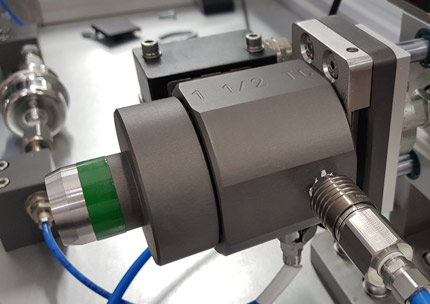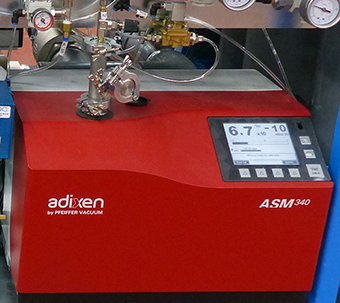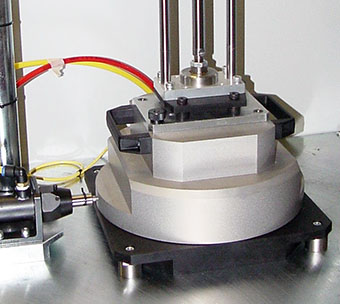The helium sniffing leak test is a method that uses helium as a tracer gas in combination with instrumentation that can detect presence of helium in the environment and more specifically an increase in helium due to a leaking part.
Generally sniffer leak detection is used to locate leaks in parts or systems so that they can be identified and where possible repaired. This test method is not quantitative as it is the skill of the operator that can determine whether a leak is found.
Sniffing is indicative at a level of 1×10-5 atm.mm3/sec but care should be taken because as soon as helium exits the leak path it dilutes, especially where there is significant air movement.
The principle of helium sniffing leak detection is to elevate the internal pressure within a part to above ambient. Having helium within the internal volume a sniffer probe is used to investigate the most likely source of where a leak might exit the part (e.g. welded joints or seal positions).
If there is a Mass Spectrometer available for sniffing, a simple tube with hand grip and restriction can be used for sniffing known as a sniffer probe. An alternative is to use a dedicated handheld portable unit with an integral fan and sensor. This dedicated instrument is a lower cost option than a mass spectrometer for helium sniffing.
Typical Helium Sniffing Leak Test Procedure
- Seal any ports or openings on the test part, leaving a single port for filling / charging with helium
- Evacuate the internal volume of the part (if possible)
- Fill / charge the internal volume with helium. Only a small pressure is required, e.g. 2-3 psig
- Scan the test part checking for leakage
- Vent the internal volume outside the test area to avoid helium build up and contamination
- Remove any fixturing and connectors
- Make sure that the gas left in the part being tested does not contaminate by releasing into the background
Examples of previous helium leak testing equipment supplied by TQC are shown in our case studies.


